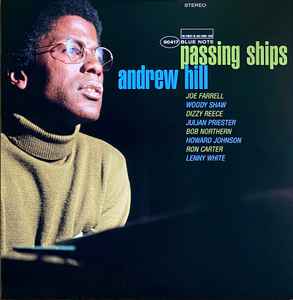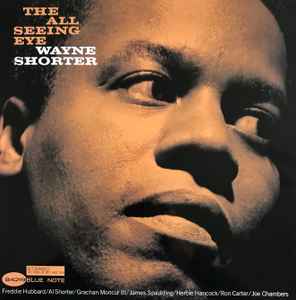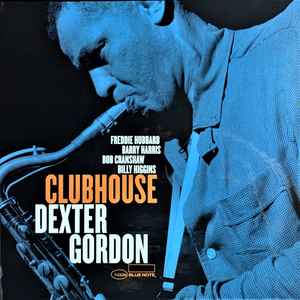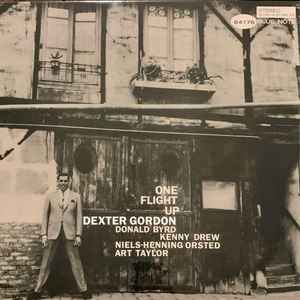Tracklist
| Fusion | |||
| Jesus Maria | 6:13 | ||
| Emphasis | 4:12 | ||
| In The Mornings Out There | 6:50 | ||
| Scootin' About | 3:35 | ||
| Cry, Want | 5:08 | ||
| Brief Hesitation | 4:15 | ||
| Venture | 3:51 | ||
| Afternoon | 5:10 | ||
| Trudgin' | 4:33 | ||
| Thesis | |||
| Ictus | 2:44 | ||
| Carla | 4:35 | ||
| Sonic | 4:44 | ||
| Whirrrr | 4:54 | ||
| That's True, That's True | 4:41 | ||
| Goodbye | 4:56 | ||
| Flight | 3:21 | ||
| The Gamut | 4:37 | ||
| Me Too | 5:03 | ||
| Temporarily | 6:09 | ||
| Herb & Ictus | 0:44 |
Credits (10)
 Jimmy GiuffreClarinet
Jimmy GiuffreClarinet Barbara WojirschDesign [Cover Design]
Barbara WojirschDesign [Cover Design] Steve SwallowDouble Bass
Steve SwallowDouble Bass- Dick OlmsteadEngineer
 Jan Erik KongshaugMixed By [Reissue]
Jan Erik KongshaugMixed By [Reissue] Herb SnitzerPhotography By
Herb SnitzerPhotography By
Versions
Filter by
11 versions
| Image | , | – | In Your Collection, Wantlist, or Inventory | Version Details | Data Quality | ||||
|---|---|---|---|---|---|---|---|---|---|
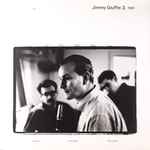 | 1961 2×LP, Album, Reissue, Remastered, Compilation | ECM Records – ECM 1438/39, ECM Records – 849 644-1 | Germany | 1992 | Germany — 1992 | ||||
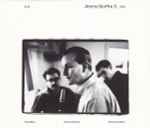 | 1961 CD, Album, Reissue, Remastered; CD, Album, Reissue, Remastered; All Media, Compilation | ECM Records – ECM 1438/39, ECM Records – 849 644-2 | Germany | 1992 | Germany — 1992 | Recently Edited | |||
 | 1961 2×CD, Album, Reissue, Remastered, Compilation | ECM Records – ECM 1438/39, BMG Classics – 78118-21438-2 | US | 1992 | US — 1992 | New Submission | |||
 | 1961 2×CD, Compilation, Remastered | ECM Records – ECM 1438/39, ECM Records – 849 644-2 | US | 1992 | US — 1992 | New Submission | |||
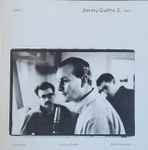 | 1961 2×CD, Compilation, Remastered | ECM Records – POCJ-1112/3 | Japan | 1992 | Japan — 1992 | New Submission | |||
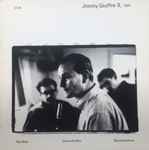 | 1961 CD, Album, Reissue; CD, Album, Reissue; All Media, Compilation | ECM Records – ECM 1438/39, ECM Records – 422 849 644-2 | US | US | New Submission | ||||
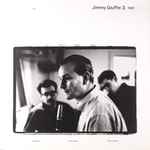 | 1961 2×LP, Album, Compilation, Reissue, Remastered, Repress, 180 gram | ECM Records – ECM 1438/39, ECM Records – 849 644-1 | Germany | Germany | Recently Edited | ||||
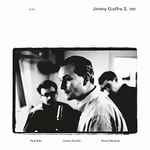 | 1961 20×File, MP3, Album, Compilation, Reissue, VBR | ECM Records – none | Germany | Germany | New Submission | ||||
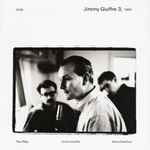 | 1961 CD, Album, Reissue, Remastered, Repress; CD, Album, Reissue, Remastered, Repress; All Media, Compilation | ECM Records – ECM 1438/39, ECM Records – 849 644-2 | Germany | Germany | New Submission | ||||
| 1961 CD, Album, Reissue, Remastered; CD, Album, Reissue, Remastered; All Media, Compilation | ECM Records – ECM 1438/39, ECM Records – 849 644-2 | Germany | Germany | New Submission | |||||
 | 1961 CD, Album, Reissue, Remastered; CD, Album, Reissue, Remastered; All Media, Compilation | ECM Records – ECM 1438/39, ECM Records – 849 644-2 | Germany | Germany | New Submission |
Recommendations
- Released2019 — WorldwideVinyl —LP, Album, Reissue, Stereo
- Released2019 — WorldwideVinyl —LP, Album, Reissue, Stereo
- Released2021 — WorldwideVinyl —LP, Stereo
- Released2019 — WorldwideVinyl —LP, Album, Reissue, Stereo
- Released2019 — WorldwideVinyl —LP, Album, Reissue, Stereo
- Released2019 — WorldwideVinyl —LP, Album, Reissue, Stereo
- Released2021 — WorldwideVinyl —LP, Album, Reissue, Stereo
- Released2019 — WorldwideVinyl —LP, Album, Reissue, Stereo
- Released2020 — WorldwideVinyl —LP, Album, Reissue, Stereo
- Released2021 — WorldwideVinyl —LP, Album, Reissue, Stereo
Reviews
 Great records but for me Thesis is the bomb because in my opinion on Fusion Paul Bley has more a supporting role while on Thesis there is more interaction between the 3 ofcourse but especially between mr Bley and mr Giuffre
Great records but for me Thesis is the bomb because in my opinion on Fusion Paul Bley has more a supporting role while on Thesis there is more interaction between the 3 ofcourse but especially between mr Bley and mr Giuffre Edited 5 years agoAbsolutely present sound. These guys were 60 years ahead.
Edited 5 years agoAbsolutely present sound. These guys were 60 years ahead.
Thorough, heavy pressing, nice gatefold cover.
ECM delight.- Is there anyone who owns a copy with only 2x side three/side four?
I have a copy with only 2x side one/side two (NM condition). we could exchange LPs so to complete item.
contact me, thanks referencing 1961 (CD, Album, Reissue, Remastered, CD, Album, Reissue, Remastered, All Media, Compilation) ECM 1438/39
1) Fusion 1961:
Review by Thom Jurek
The debut recording by Jimmy Giuffre's new trio was as startling a new development in Giuffre's music as it was in jazz. Where Giuffre's earlier '50s trio with Jim Hall and Ralph Pena provided a framework for the kind of improvisation he wanted to do, it still held fairly tightly to the jazz conventions of the time stylistically -- the arrangements were different, of course, given there was no drummer, but the sounds were in the pocket of the '50s. With Fusion, everything changed for Giuffre, as it was for jazzers everywhere, albeit in a different way. In Paul Bley and Steve Swallow, Giuffre found the perfect dynamic: a pianist whose open spacious chordal improvisation provided room to move entire sound worlds in and out of, and a bassist whose deft handling of meter and harmonic balance created a cliff to jump from. The set opens with Carla Bley's painstakingly slow "Jesus Maria." Seemingly out of West Side Story, it offered listeners the first real opportunity to hear the kind of space Giuffre had been talking about since 1958. His melodic line slips slowly out of the clarinet as Bley's triads flavor it harmonically, all the while establishing a mode for improvisation. Swallow goes for single and double note rhythms wherever possible, paying close attention to Bley's left hand. In all the rounded warmth, something very adventurous is happening, in that all three musicians try not to share space, but keep it between them in ensemble play as well as in improvisation. In Giuffre's "Emphasis" we hear for the first time: Bley's pointillistic pianism showing it in angular fifths and eights before jumping into a funky, if weird blues. Giuffre's clarinet plays counterpoint in his solo, making Bley stand out even more, as Swallow punches up notes and very minimal runs bringing a virtual funkiness to the tune the rest of the avant-guard of the time wasn't aware you could get -- it wasn't until Archie Shepp was pulling it off in 1968 that the same kind of statements were used. The economy used by all three musicians creates a quiet yet riveting tension in the music. "In the Mornings Out There" begins with a near direct cop of "Freddie the Freeloader" by Miles Davis, though it too is by Carla Bley. As Bley plays his two chords in a one-two, one-two rhythm, Giuffre finds the melody in blues phrasing stretched to the breaking point, though without edges. Swallow, keeping time, plays an octave lower than usual, granting a deep, wide bottom to the proceedings. The melody doesn't enter the tune until a minute of riffing has passed and Giuffre introduces it by moving in gentle counterpoint against Bley's right hand. When it's time to solo, the listener can't tell whose break it is, because both men are soloing simultaneously. Giuffre and company knew one thing and had it down: that an approach this subtle had to be rife with melodic invention and harmonic advancement. Bley was the right pianist; his open modal scales provided all the Debussian contrapuntal ideas necessary for Giuffre to use what he had learned from studying with Darius Milhaud the colors and textures of Debussy's tone poems, the "Trois Nocturnes." A good listen to "Cry, Want" reveals this in spades with its droning intervals and timbral mysteries that seem to entwine between Bley's triads and Giuffre's lilting solo in the face of a driving Swallow rhythmic counterpoint. The elegance and grace of this album didn't set the American jazz world on fire as Free Fall would the next year, but it did set up further textural and architectural possibilities for the trio's next album, Thesis.
2) Thesis:
Review by Thom Jurek
The tone of Thesis, recorded a month after the gorgeous explorations that were the Fusion album, revealed the influence of the jazz vanguard on Giuffre's direction. If Fusion's structures and harmonic architectures were loose, those on Thesis were almost completely undone. From the album's opening moments, the intense, breathtakingly knotty melody of "Ictus" comes charging out of the gate with scarcely enough time for the listener to discern whether what's being played is a composition or an improvisation. But neither the jazz avant-guard, with its charging rhythms and atonal signatures, nor the hard bopping Blue Note swingers held any sway over Giuffre's approach to texture and his insistence on subtlety and space. On "That's True, That's True," Bley takes the tune down the blues road only to have Swallow open it into a modal meditation on B flat. Giuffre's solo is a contrapuntal arpeggio study that alternating mode and interval along with Swallow, coloring in open the chords of Bley with stutters and long runs up and down the horn both in and out of scalar logic. They immediately move toward "Sonic" which many have made arguments is third stream, but this is jazz, pure and complex. Bley's established 6/8 swings over to Swallow and allows Giuffre his 18/8 solo in arpeggiated flurries and a timbral twist that carries the tone of the upper register near the middle register of a soprano saxophone. Bley's 12-tone influences are present too, with striking work in the middle register with the right hand; trills and eighth note runs alternate but never before the rest of the notes in the scale are played. Swallow moves toward a minimal approach, abandoning meter to Bley's sense of time, and concentrates on punctuating statements by both soloists with pizzicato runs up the neck or an ostinato opening the chords up for a denser wash of notes from Bley, who is on fire. The fiery counterpoint among the three is nearly unbelievable on this record. It's font of ideas and range of textures, colors, and emotions never lets up. The listener is exhausted by its end and in the present day, when it is still ahead of its time, wonder what jazz audiences in the United States must have made of it back then. No matter, the restless bravery employed by Giuffre, Bley, and Swallow here are as revelatory in their study of dynamic and counterpoint now as they were then -- and these guys still played the blues!
Master Release
Edit Master Release
Correct
Correct
For sale on Discogs
Sell a copy50 copies from $10.73



